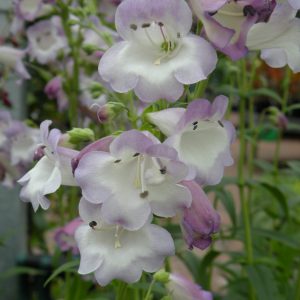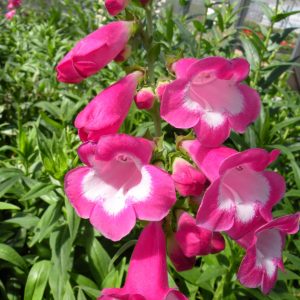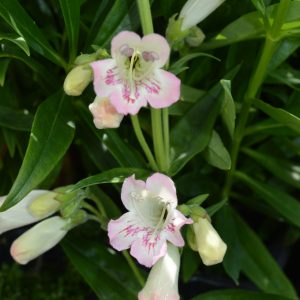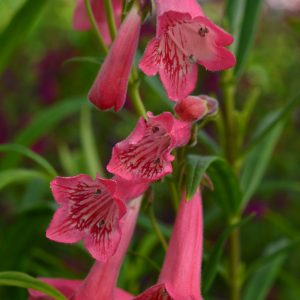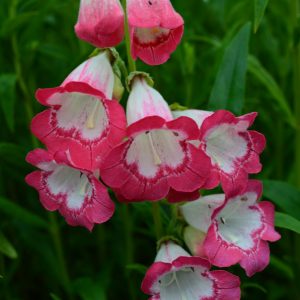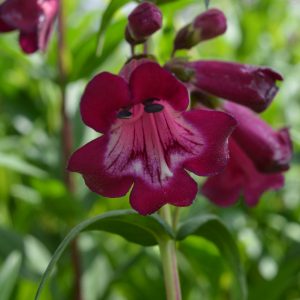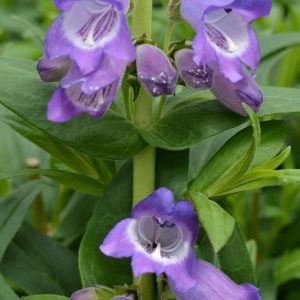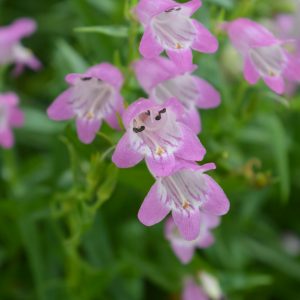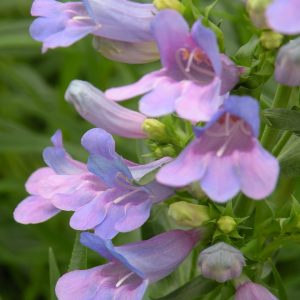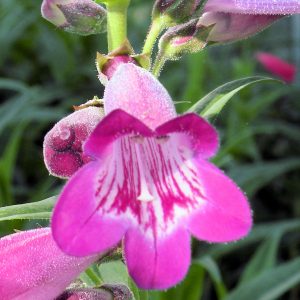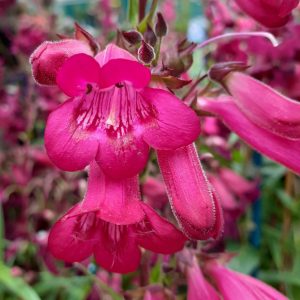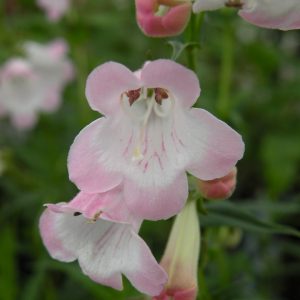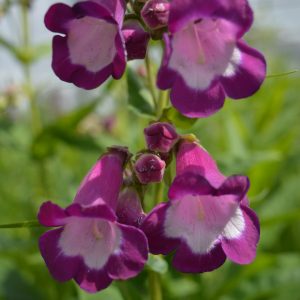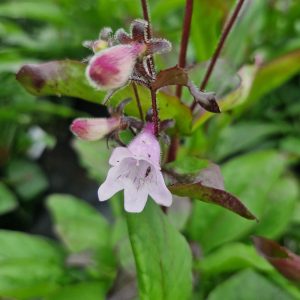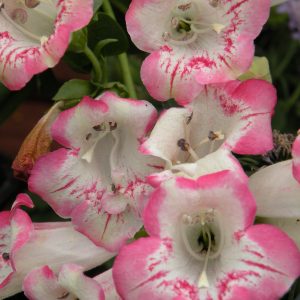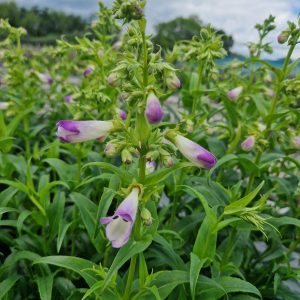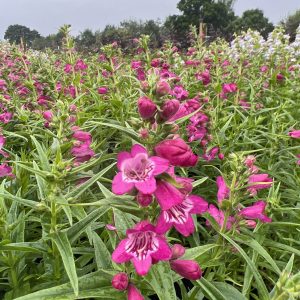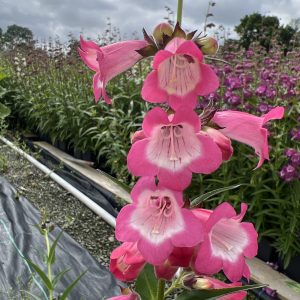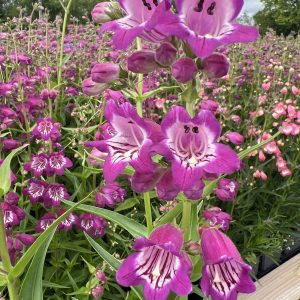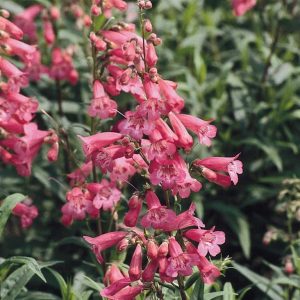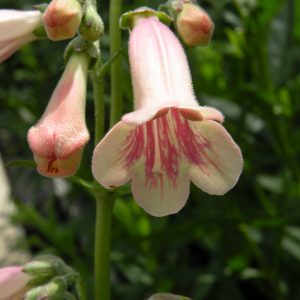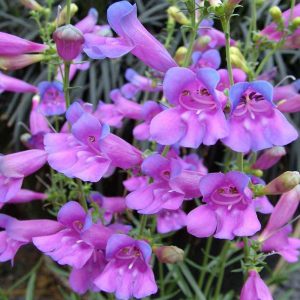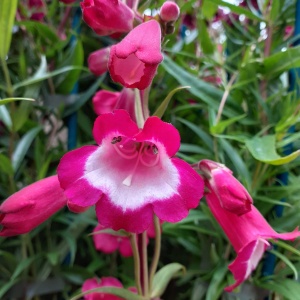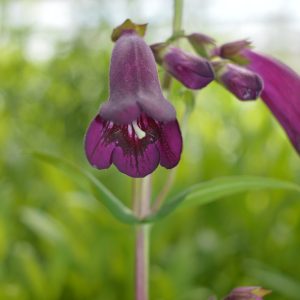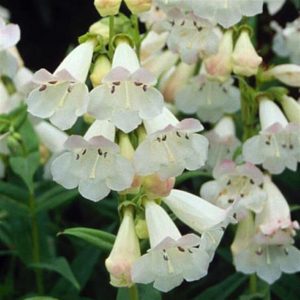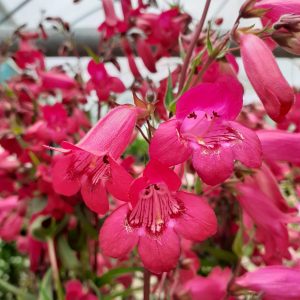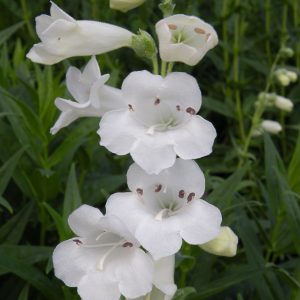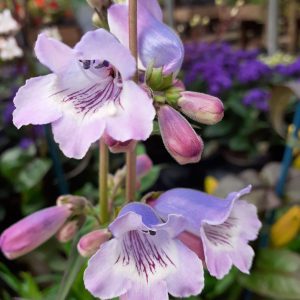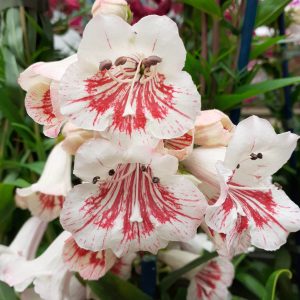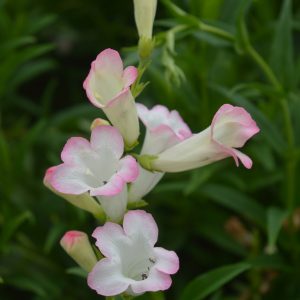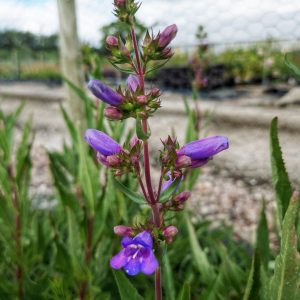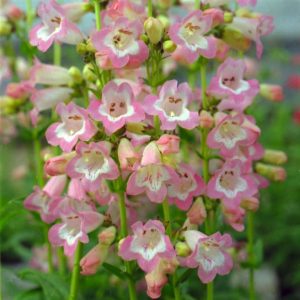Penstemons, commonly known as beardtongues, are stunning perennials known for their tubular flowers and vibrant colours. Follow this comprehensive planting guide to ensure the successful establishment of your penstemon plants:
Site Selection
Sunlight: Penstemons thrive in full sun to partial shade. Choose a location that receives at least 6 hours of direct sunlight per day for optimal flowering.
Soil Type: Plant penstemons in well-draining soil with a slightly acidic to neutral pH (6.0 to 7.0). Good drainage is essential to prevent root rot.
Planting Time
Spring or Autumn: Plant penstemons in the spring after the last frost or in the autumn before the first frost. These seasons allow the plants to establish roots without the stress of extreme temperatures.
Planting Process
Prepare the Soil: Work the soil to a depth of 12-18 inches, incorporating organic matter like compost. This improves drainage and provides essential nutrients.
Planting Depth: Dig a hole twice the diameter of the root ball. Place the penstemon at the same depth it was in the nursery container, ensuring the crown is level with the soil surface.
Spacing: Space penstemons according to the specific variety, usually 12 to 24 inches apart, to allow for proper air circulation and prevent overcrowding.
Watering
Initial Watering: Water thoroughly after planting to settle the soil. Keep the soil consistently moist during the first growing season to help establish a strong root system.
Mulching
Mulch Application: Apply a layer of organic mulch around the penstemon to retain soil moisture, suppress weeds, and regulate soil temperature. Keep mulch away from the base of the plant to prevent rot.
Fertilisation
Spring Fertilisation: In early spring, apply a balanced, all-purpose fertiliser. Follow package instructions for the appropriate dosage.
Support Structures
Staking: Tall or heavy-flowered penstemon varieties may benefit from staking to prevent bending or breaking. Install stakes early in the growing season.
Pruning
Deadheading: Remove spent flowers to encourage continuous blooming. In late autumn or early spring, cut back the stems to maintain a compact and tidy appearance.
Pest and Disease Management
Vigilant Monitoring: Regularly inspect penstemons for pests such as aphids or diseases like powdery mildew. Treat promptly with insecticidal soap or fungicides if needed.
Winter Care
Mulching in Winter: Apply a layer of mulch around the base of penstemons in late autumn to protect the roots from winter temperature fluctuations.
Division (Every Few Years):
Rejuvenation: Divide mature penstemon plants every 3-4 years to promote vigour and prevent overcrowding. Divide in the spring when new growth begins.
Enjoy the Blooms
Blooming Season: Penstemons typically bloom from late spring to early autumn, providing a spectacular display of tubular flowers. Enjoy the vibrant colours and unique beauty they bring to your garden.
By following these guidelines, you’ll help your penstemons thrive and adorn your garden with their charming blooms. Customise care based on the specific penstemon variety you have and enjoy the rewards of a flourishing garden.



